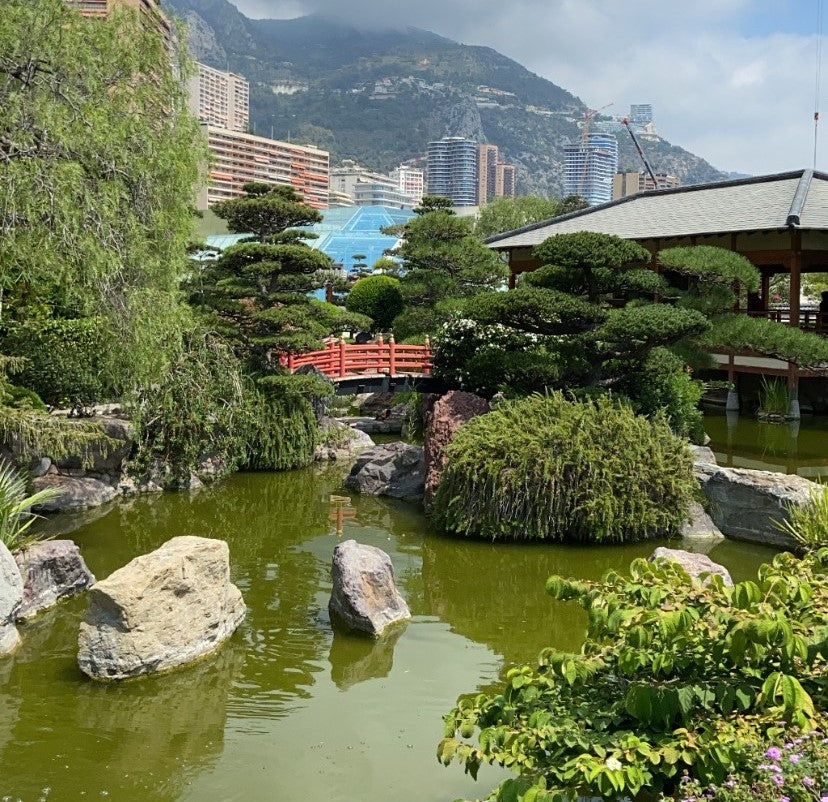
An oriental oasis within the Principality of Monaco
Not many would expect to find an enormous Japanese garden in the center of Monte Carlo, a city in the Principality of Monaco overlooking the Mediterranean.
Not far from the seafront, in the Larvotto neighborhood, there is a splendid garden with plants, flowers, ponds, bridges and even a tea house. At the center of the independent state, one of the richest centers on earth between luxury and worldliness, there is an oasis of peace. For a moment, it is possible to imagine that you are in Japan.
The Japanese garden, or in French "Jardin Japonais", was requested by Prince Rainier III of Monaco in honor of Princess Grace Kelly, and was created by the Japanese landscape architect Yasuo Beppu (winner of the Grand Prize of the 1990 Osaka Flower Exhibition). The architect returns to Monaco every year from Japan to give advice on maintenance, and to collaborate with the principality's gardeners to pass on all his knowledge.
The garden was designed and created in full compliance with the Zen philosophy and according to all the criteria of Japanese design. Within these gardens, each element must have a precise meaning and place, and the garden itself must encourage meditation and contemplation, being very much linked to Buddhism. To create a garden in a different territory that resembles Japan and symbolizes a true union between East and West, plants and flowers typical of the Mediterranean area were used (olive, pine and pomegranate trees). These were modeled to reflect the iconic shapes and features of the plants that adorn Japanese gardens.
As for the rest of the furnishings, everything was imported from Japan, including the traditional stone lanterns, the bamboo hedges and the wood used to build the tea house.
The garden is also made up of lakes, streams and waterfalls which give it an even more Zen and authentic atmosphere. Inside the lakes adorned with water lilies and lotus flowers there are numerous carp (more precisely Koi Carp, particular species of domesticated Japanese carp).
The area is free to enter, and no ticket is necessary. Almost all of it is accessible, including access for people with disabilities.
Definitely a place to be sure not to miss if you visit Monte Carlo, in any season!



